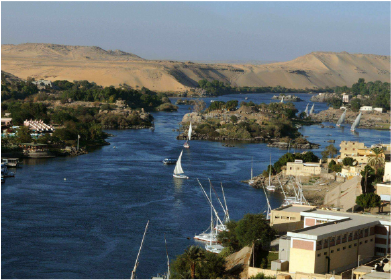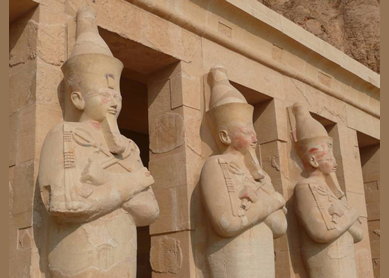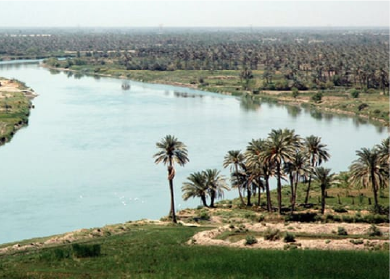What is the Nile?
The Nile is a river in Egypt that is more than 4,100 miles (6,600 km) long. While the Nile also flows through other African countries, it is most heavily associated with Egypt. The river has been essential for Egypt’s prosperity from antiquity to the present.
Although many Egyptian gods were associated with the Nile, Hapi is perhaps the most significant. Hapi was the god greeted by Egyptians every spring, since he symbolized the annual flooding of the Nile, which brought prosperity and fertility to the land. This cyclical flood was so predictable that Egypt came to be known as the only site in the region with a steady food supply. The Bible and other ancient documents report that when food was scarce in other areas, migrants came to Egypt for supplies (Gen 12:10 , Gen 41:57 ). Egyptians believed that the predictability of the Nile’s floods depended on upholding their larger religious principles and practices, which staved off the powers of chaos and maintained cosmic order.
The English word “Nile” derives from the river’s Greek name, Neilos, and its Latin name, Nilus. In the Hebrew Bible, there is no proper noun or title for this river: the Nile is often simply referred to as “the river” (e.g., Gen 41:1 ) or “the river of Egypt” (e.g., Amos 8:8 ). This Hebrew word used for river here may derive from the generic Egyptian word for river. Following the Hebrew, the Septuagint does not use the specific word Neilos, which appears in other ancient Greek texts. However, modern English translations typically insert the word Nile where it is implied. The Nile is not mentioned in the New Testament.
What is the role of the Nile in the Hebrew Bible?
The Nile often plays a central role when Egypt is featured in the Hebrew Bible, especially in the book of Exodus. Pharaoh commands that all the Hebrew boys be drowned in the Nile (Exod 1:22 ), but Moses’s mother Jochebed saves his life by putting him in a basket and placing it in the river (Exod 2:3 ). Pharaoh’s daughter finds Moses in the Nile and draws him out (Exod 2:5 ). Later, God tells Moses to pour water from the Nile onto dry ground where it will turn into blood in order to convince the Israelites that Moses is a representative of the God of their ancestors (Exod 4:9 ). The Nile is part of two of the plagues against Egypt, one in which the whole river is turned into blood (Exod 7:14-25 ), and another in which frogs emerge from the Nile and other bodies of water and cover the land (Exod 8:1-6 ). God’s attacks on the Nile demonstrate his ability to damage the Egyptian economy and agriculture. The authors of these texts seem keenly aware that the Nile was considered to be the divine lifeblood of Egypt.
The association between the Nile and Egyptian prosperity continues in the Prophets, where God’s dominance over Egypt and its gods is symbolized by his power over the Nile. A recurring theme is that of God drying up the Nile: Isaiah prophesies this event (Isa 19:5-8 ), which he says will cause the Egyptians to worship the God of Israel (Isa 19:18-22 ). Ezekiel prophesies that the Nile will run dry as part of the destruction of Egypt planned by God and performed by the Babylonians (Ezek 30:12 ). In Zechariah, God’s draining of the Nile and associated destruction of Egypt is part of the ascent of the Judahites to power (Zech 10:11 ). Finally, God rebukes Sennacherib for taking credit for drying up the Nile when in fact it was God who had orchestrated Sennacherib’s successes (Isa 37:25-6 ; 2Kgs 19:24-5 ). God’s power over the Nile here, as in Exodus, is symbolic of his authority over the great Egyptian empire; in the Prophets, this is expanded into a demonstration of God’s power over the whole world.





